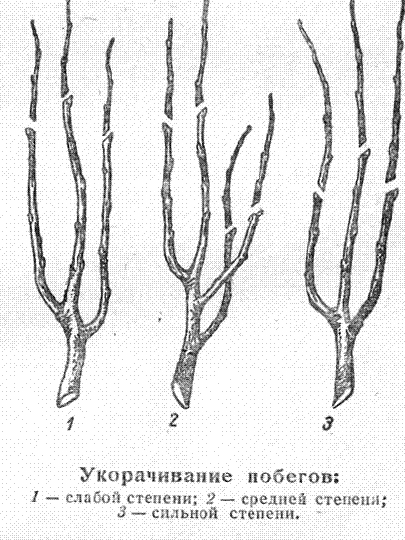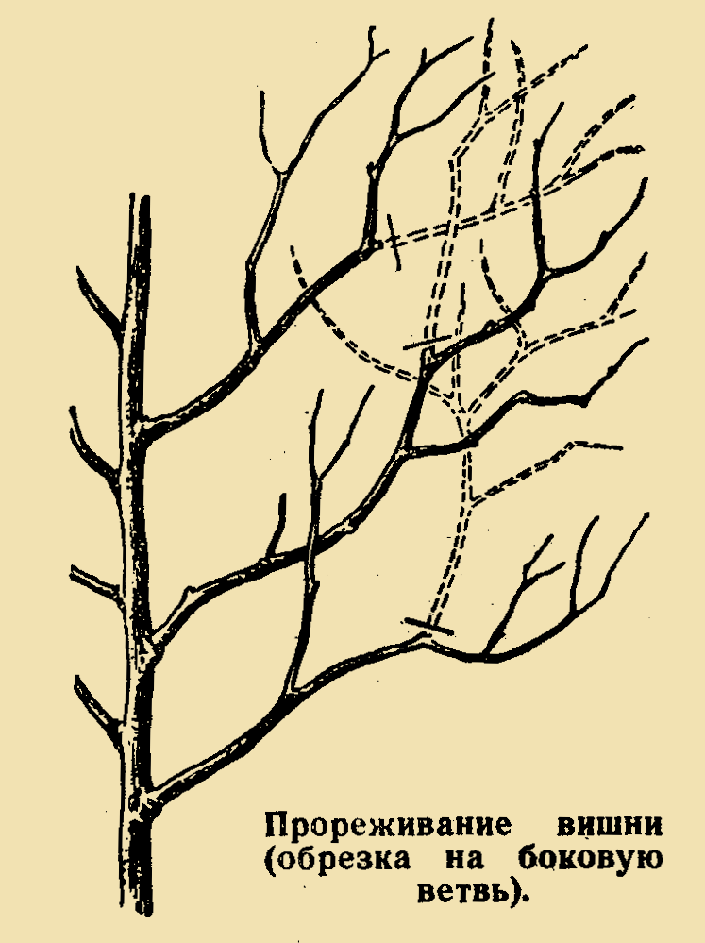Cherry crown formation for better fruiting
Cherry ranks second in prevalence after the apple tree. She is also quite demanding in terms of care. There are times when the yield of this fruit tree begins to decline. In this case, it is possible to improve fruiting by forming the crown of the cherry.
Content
Crown formation methods
Before you start forming the crown of a cherry, you should know the features of its pruning:
- cherries are characterized by a high rate of awakening and early maturity of the buds;
- from the bud, a young shoot develops during the growing season;
- within a short period of time, the crown thickens;
- cherries can easily tolerate slight thickening, but the crown should not be started. this will darken its inner part;
- the number of flowering buds and the yield, in this case, have a direct relationship;
- bouquet branches can bear fruit for up to five years, and then they die off.
If the cherry is well lit and has a ventilated crown, then the harvest will be good. In this case, the tree will live longer.
It is believed that a sparse-tiered crown, various options for fusiform and flattened bark are most suitable for cherries.
There are the following ways to form a cherry crown:
- shortening or trimming;
- thinning or cutting.
Shortening method
Cherry is characterized by a very fast formation of long shoots, as well as strong branching of its branches. Pruning is carried out by pruning tree branches that have lengthened by more than 40 cm. Such pruning is carried out in order to stimulate the formation of new bouquets and bouquet branches. It will also help prevent further exposure of the branches when the bouquet branches begin to die off.
When carrying out shortening, remember the following anatomical and biological features of the tree:
- high conductivity;
- high early maturity of the kidneys;
- high degree of branching;
- fast formation of new branches;
- there is a tendency, after a period of fruiting, to bare branches;
- they begin to form crowns by determining the height of the trunk at the cherry (usually they choose a height of up to 40 cm);
- there should be no shoots on the trunk;
- above the trunk, strong and well-developed branches (about five pieces) are chosen, which form the skeleton of the crown;
- the rest of the branches must be cut out under the ring.
- As a result, this method leads to the partial removal of the tops of the shoots, fruits and branches.
There are three ways of shortening:
- weak - consists in removing approximately 1/4 of the total annual growth;
- average - shorten about 1/3 of the growth per year;
- strong - shorten about 1/2 of the total annual growth.
The following subtypes of this method of crown formation are also distinguished:
- chasing or light rejuvenation - they shorten the branches by 2 and 3 years old wood;
- moderate rejuvenation - shortening is carried out on 4 and 6-year-old wood;
- strong rejuvenation - shortening is comparable to most of the wood mass of skeletal branches.

The result of shortening:
- the diameter of the crown decreases;
- increased shoot growth;
- stimulating the intensity of the development of the kidneys, which are located below the cut;
- thickening of the branches.
Do not forget that systematic and abundant shortening can provoke a weakening of the tree in the future and a decrease in the volume of its branches.
Thinning method
This method involves the removal of branches, shoots and fruits entirely and on the ring.
The result of the tenderloin:
- there is a more significant reduction in the diameter of the crown;
- protection of the crown from excessive thickening;
- improves air and light conditions;
- stimulation of fruit formations.

In both cases, when shortening, that when thinning, the process of redistribution of water and nutrients is activated. These substances and water are directed to those areas, the growth of which is necessary and preferable. There is a decrease in the diameter of the crown, a decrease in the number of buds, the path from the root system to the leaves is significantly reduced, due to this, growth is stimulated. As a result, you will get branches with good water-carrying capacity.
Both of these methods are used to form the crown of the following cherry varieties: baby, shpanka, kronotex, kronostar, bodense, atlas and meeting.
Video "How to properly prune cherries"
You can learn more about pruning cherries correctly in this video.
Formation of the skeleton of the crown during planting
The beginning of fruiting, as well as the longevity of this fruit tree, directly depend on the correctly formed crown of the cherry when planting.
How should the formation of skeletal branches of a cherry be carried out when planting it?
The main nuances of this process:
- the formation of the crown is carried out when planting a cherry in a place where it will have to grow constantly;
- pruning must be carried out taking into account the state of its root system, the degree of pruning of the aboveground part is directly proportional to the degree of damage to its root system;
- for cherry seedlings that were grafted on a seed stock, as well as in the absence of branches, it is necessary to make a cut above the bud and at a height of about 60 cm from the ground;
- the rest of the buds are left and lateral shoots will grow from them in the future;
- on these shoots it will be necessary to organize a layer of skeletal branches of the first order;
- for seedlings with rather weak shoots, the stem, in the first year after planting, is not cut out, but only pinched. This will stimulate the development of shoots, which will be used to form the crown of the first tier;
- if the seedlings have lateral ramifications, then to form the first tier, you need to choose three shoots, which are placed around the circumference of the trunk (it is believed that the optimal angle of inclination of the branches from the trunk is approximately 45-500). Branches with an acute angle of growth are not suitable for the skeleton, since they will break off under the weight of the fruit and the growth retardation will be quite noticeable.

Formation of subsequent tiers
After the skeletal branches of the seedling have been formed, you can begin to form the subsequent tiers of the crown of the tree.
On annual seedlings that have lateral ramifications of the first tier, the branches of the second tier are laid. For these purposes, side shoots are chosen. You should not choose shoots that grow on the upper sides of the branches, as they can develop tops or fatty shoots, which will only interfere with the development of the necessary skeletal branches.
For cherry varieties, which are tree-like, they most often form a discharged - longline crown. In this case, about five or six main or skeletal branches are laid on a fruit tree. They are located as follows:
- three branches are placed side by side, and the fourth is at a distance of 60 - 70 cm from them, the fifth branch is at least 60 - 70 cm from the fourth;
- two branches go side by side, and the third - only 25 - 30 cm from them;
- the fourth is located at a distance of about 60 - 70 cm from the third;
- the fifth - at a distance of about 40 - 50 cm from the fourth.
In other cases, the necessary shoots of the first tier can be leveled in the following way: the medium-developed branch must be shortened by one third, and the rest are cut in such a way that the level of their top is on the same level with it.
In cherries with a pyramidal crown and without a cut of the lateral branches, cuts are made on the outer bud in order to expand the crown. And if the tree has a spreading crown, then the side branches are cut on the inner bud to form a crown of more compact sizes.
In all cases, the central conductor must be cut in such a way that it does not exceed the height of the side branches by more than 20-25 cm.
Then they begin to organize branches that are located on the main skeletal branches (skeletal branches of the second order). They begin to form at a distance of about 50 or 60 cm from the trunk. The distance between these branches, located on the main skeletal branch, should not be less than 30 cm. After the onset of the fruiting period, the central conductor is cut to the upper lateral skeletal branch.
As the tree develops, skeletal branches are added. Their number can reach ten. The final formation of the cherry crown ends at about the age of five years.
With the correct formation of the cherry crown, you can achieve a higher yield of the best quality, create optimal conditions for stimulating the growth of the necessary branches and, thereby, prolong the youth and life of your fruitful tree.
